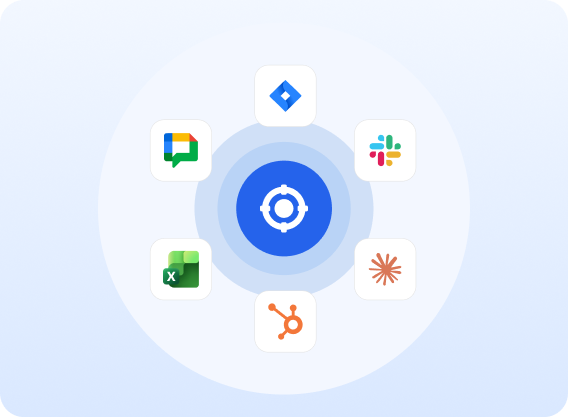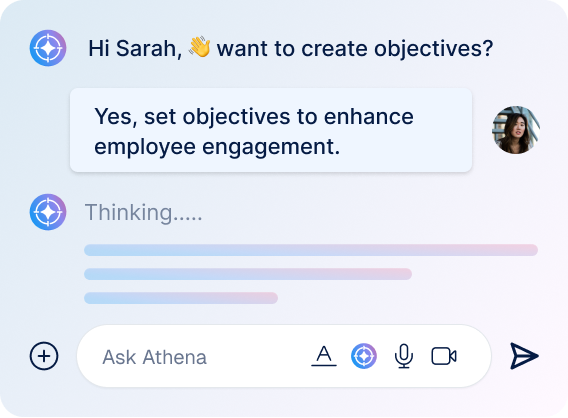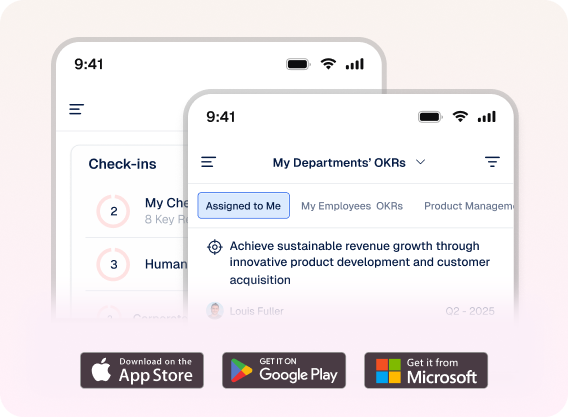Introduction
In today’s digital landscape, federal, state, and local institutions face the challenge of communicating information in a connected, integrated, and efficient way. Implementing a results-driven communications strategy is critical and not just beneficial for mission success.
Stakeholder engagement, a cornerstone of effective public service, plays a vital role in this process. Government agencies can significantly improve stakeholder engagement through strategic communication, improving project outcomes and public trust.
Why Stakeholder Engagement Is Crucial in Government Agencies
Before we explore further, let us first understand
What is stakeholder engagement?
Stakeholder engagement is the process of collaborating with individuals, groups of people, or organizations that may affect or be affected by a project or initiative. In the context of government agencies, effective stakeholder engagement ensures that public service projects align with the community’s needs and expectations, thereby enhancing their likelihood of success.
Here’s why it matters
A Catalyst for Project Success
Engaging stakeholders early often allows agencies to gather valuable input to shape the project better to meet community needs. This greatly improves the project’s design and increases the likelihood of public support and successful implementation.
Builds Public Trust
Transparency and open communication will build trust between government agencies and the public. When stakeholders feel informed and involved, they are more likely to trust the agency and support its initiatives.
Mitigates Risks
Government agencies can consult stakeholders to identify and address potential issues before they escalate. This proactive approach reduces the risk of opposition and project delays.
Despite the clear benefits of stakeholder engagement, government agencies often need help implementing effective strategies. Understanding these obstacles is crucial for overcoming them and ensuring successful stakeholder engagement.
Unique Challenges in Government Stakeholder Engagement
Stakeholder engagement in government agencies often faces challenges due to limited resources, leadership commitment, technology limitations, and declining public trust. However, these obstacles can be overcome by effectively implementing strategic communication.
How Strategic Communication Enhances Stakeholder Engagement
Strategic communication is the backbone of effective stakeholder engagement. Government agencies can significantly enhance stakeholder engagement by using communication to build relationships, foster trust, and create a collaborative environment.
Map Out Your Stakeholders
Start by identifying your stakeholders.
Ask these questions.
- Who are the primary beneficiaries of the project?
- Who are the potential opponents of the project?
- What are the concerns or interests of each stakeholder group?
- Who are the key decision-makers and influencers within the stakeholder groups?
- How does each stakeholder group communicate and receive information?
- What is the level of engagement or influence each stakeholder currently has?
- Are there any external organizations or entities that might be interested in the project?
- Who will be responsible for engaging with each stakeholder group?
These questions provide a complete picture of the stakeholders involved and their potential impact on the project. Conduct a Stakeholder Analysis, identify key stakeholders, including citizens, advocacy groups, and government partners, and understand their needs and influence. By mapping out your stakeholders, you can tailor your communication strategies to address their unique concerns, needs, and expectations.
Ensure Leadership Commitment at All Levels
Securing leadership commitment is crucial for stakeholder and employee engagement efforts. When leaders actively support these initiatives, they build public trust, enhance policy success, and strengthen the impact on the community. Leaders who prioritize engagement demonstrate transparency and accountability, aligning their decisions with the needs and aspirations of the communities they serve.
How can you Secure Leadership Commitment?
- Use data and case studies to demonstrate the value of communication in stakeholder and employee engagement that contributes to public service goals.
- Connect communication initiatives directly to the agency’s strategic priorities, illustrating how these efforts support the overall mission.
- Encourage leaders to participate in strategic communication activities, setting an example for the organization and highlighting their importance.
Develop a Specific Communication Plan
Create a tailored action plan based on your assessment that addresses identified challenges and opportunities. Set clear objectives and prioritize low-cost, high-impact strategies.
What should your plan have?
- Align communication strategies with the agency’s broader policy objectives.
- Define clear, measurable goals that reflect public service and stakeholder interests.
- Visualize and map out the networks of influence within government agencies, elected officials, and other public sector entities.
- Outline specific steps, timelines, and responsibilities for communicating with stakeholders, ensuring alignment with government procedures.
- The plan should ensure feedback and participation from stakeholders, as well as transparency and accountability in communication efforts.
- The plan should include metrics to regularly track the effectiveness of communication strategies and adjust as needed to maintain public trust and engagement.
Transform your communication approach and boost engagement
Craft Tailored Public Messages
In government communication, a one-size-fits-all approach rarely works. Different stakeholder groups have diverse concerns, expectations, and levels of influence. Crafting tailored messages is essential to ensure that your communication resonates effectively with each group.
4 key steps to a perfect message
- Begin by identifying the unique characteristics, concerns, and expectations of each stakeholder group. Are they government officials, community leaders, or the general public? Understanding their perspectives is key to crafting messages that speak directly to their needs.
- Adjust the tone, content, and delivery method of your message based on the stakeholder group. For instance, a detailed, data-driven approach might resonate with government officials, while a more narrative, outcome-focused message could appeal to the general public. Ensure that your communication aligns with the specific interests of each group. For example, highlight the impact on public services when addressing community
- leaders, or emphasize strategic benefits when communicating with policymakers.
- Tailored messages should still be clear, consistent and to the point. Avoid jargon unless you’re certain the audience will understand it, and focus on delivering your key points succinctly.
Engage Early, Often, and Transparently
Start engaging with your stakeholders early in the process to gather input, address concerns, and build trust. Maintain transparency by creating continuous opportunities for dialogue, allowing stakeholders to voice their opinions, ask questions, and provide feedback. This ongoing engagement fosters a sense of inclusion and trust, reducing the risk of opposition and increasing the likelihood of support.
How do we make it happen?
- Communicate the agency’s goals, progress, and how each individual’s work contributes to the broader mission to align and motivate employees.
- Engage stakeholders early to gather input, address concerns, and build trust from the outset.
- Maintain open lines of communication with continuous opportunities for dialogue to ensure transparency.
- Encourage feedback by encouraging stakeholders and employees to voice ideas, ask questions, and provide feedback.
- Consistent engagement reduces the risk of opposition and creates a collaborative environment.
- Foster inclusion and collaboration and increase the likelihood of gaining broad support for agency initiatives.
Use Multiple Communication Channels
Reaching stakeholders effectively requires a strategic mix of both traditional and digital channels. The key is to ensure that your message is delivered through the channels where your audience is most comfortable and likely to engage.
Points to Note
- Use traditional channels like town hall meetings, printed newsletters, and direct mail for stakeholders who prefer personal, face-to-face communication. Digital channels, such as social media and email newsletters, provide a broader reach and are ideal for engaging a tech-savvy audience.
- Tailor your approach based on the preferences of each stakeholder group. Government officials may prefer detailed reports, while the general public might engage more with social media updates or community forums.
- Ensure your communication is delivered through platforms recognized and approved by government standards, such as official websites, public information sessions, or accredited social media accounts, to maintain credibility and compliance.
- Maintain consistency in your messaging across all communication channels to avoid confusion and reinforce your core message, whether through detailed reports or quick social media updates.
Monitor and Adapt Your Strategy
Continuously monitor the effectiveness of your communication strategy and be ready to adapt as needed.5 Key Actions to Keep Your Communication Strategy Agile
1. Monitor engagement metrics by tracking email open rates, meeting attendance, and survey responses to gauge stakeholder engagement. Identify trends and areas for improvement.
2. Gather feedback using surveys, polls, and direct feedback channels to gather stakeholder insights. Analyze feedback to understand their needs, concerns, and preferences.
3. Assess internal engagement by conducting regular employee surveys to gauge their satisfaction and alignment with communication goals. Address any issues to ensure a cohesive and engaged team.
4. Be open to trying new communication channels if existing ones are ineffective.Stay flexible and adapt your strategy to changing stakeholder needs and priorities.
5. Regularly review and evaluate your communication strategy. Make data-driven adjustments to ensure ongoing effectiveness.
Highlight Successes and Milestones
Government agencies must communicate their successes and milestones to maintain momentum and strengthen stakeholder engagement. By strategically highlighting achievements and recognizing contributions, agencies can reinforce the positive impact of stakeholder involvement and drive their initiatives forward.
Here’s a breakdown of key strategies
Highlight and Celebrate Wins
Regularly update your stakeholders on both small victories and major milestones. Celebrating these achievements showcases your initiatives’ progress and reinforces the positive impact of stakeholder engagement. Acknowledging these successes keeps enthusiasm high and encourages ongoing support.
Showcase Public Service Achievements
Make it a point to communicate the tangible outcomes of stakeholder engagement. Highlighting these public service achievements builds trust, enhances your agency’s credibility, and garners further support for future initiatives.
Recognize and Reward Contributions
Implement recognition programs that celebrate individual and team accomplishments. Link these recognitions to how their contributions drive the agency’s mission forward. This motivates employees and fosters a culture of appreciation and dedication to public service.
Track and Celebrate Progress
Use clear metrics to track the success of your engagement efforts. When milestones are reached, take the time to celebrate them. This boosts morale, keeps the momentum going, and signals that the agency values progress and the people making it happen.
Invest in Strategic Communication Tools
Investing in advanced communication tools is crucial for streamlining stakeholder engagement and enhancing strategic efforts. These tools help track interactions, manage data, and automate communication, allowing your team to focus on higher-level tasks. They also provide real-time insights and help track performance metrics, supporting continuous improvement.
Consider These Tools
- CRM systems to manage relationships, track communications, and analyze engagement data, ensuring compliance with standards.
- Email and social media platforms to reach stakeholders through targeted messaging and track the effectiveness of your campaigns.
- Survey tools to gather valuable feedback from stakeholders to understand their needs and adjust strategies accordingly.
- Collaboration platforms to facilitate real-time team collaboration, ensuring coordinated and efficient engagement efforts.
- Goal-setting and performance-tracking systems align individual and organizational objectives and track progress.
- HR and Talent Management Platforms to manage employee performance, goal setting, and workforce analytics efficiently.
- Project management tools to organize and manage multiple initiatives, ensuring that all projects stay on track.
Integrating these tools into your agency’s strategy can enhance stakeholder engagement, improve efficiency, and achieve your mission more effectively.
Foster a Culture of Continuous Improvement
Creating a culture of continuous improvement requires deliberate actions and a commitment to ongoing development. Here’s how you can make strategic communication and stakeholder engagement an integral part of this culture:
- Implement regular training sessions and feedback loops.
- Encourage innovation through rewards and active leadership involvement.
- Use collaborative platforms to share best practices.
- Regularly check in with employees via surveys and transparent communication.
- Promote cross-departmental collaboration and continuous learning.
- Recognize and reward employee contributions to drive sustained engagement.
Conclusion
Government agencies can create a more connected, motivated, and effective workforce by integrating strategic communication into their stakeholder and employee engagement efforts. These strategies improve public service outcomes and create a culture of continuous improvement and accountability. The time to act is now—take the first step toward enhancing engagement in your agency and achieving tremendous mission success.
Effective stakeholder engagement is crucial as government agencies navigate an increasingly complex landscape. By embracing emerging technologies like artificial intelligence, social media analytics, virtual and augmented reality, and blockchain, the government can stay ahead of the curve and foster stronger relationships with the public. These innovative approaches offer new opportunities for personalized communication, transparent collaboration, and data-driven decision-making, ultimately enhancing the effectiveness of public service initiatives.
Ready to build stronger public trust?
Related Articles
-
Strategic Planning vs. Operational Planning: Understanding the Difference
Every successful organization relies on both a clear vision of the future and a disciplined approach to making that vision... Read more
-
One Execution View for OKR and Balanced Scorecard Integration
TL;DR Companies don't have to choose between OKRs and Balanced Scorecard; they work better together. OKRs help set big goals... Read more
-
Do You Really Need to Choose Between OKRs and Balanced Scorecards?
We have seen this happen in dozens of groups, and it's always the same. You say that you're going to... Read more
-
How the Balanced Scorecard Helps Government Agencies Better Serve the Public
TL;DR Government agencies have to deal with a lot of different problems, like serving a wide range of stakeholders with... Read more



